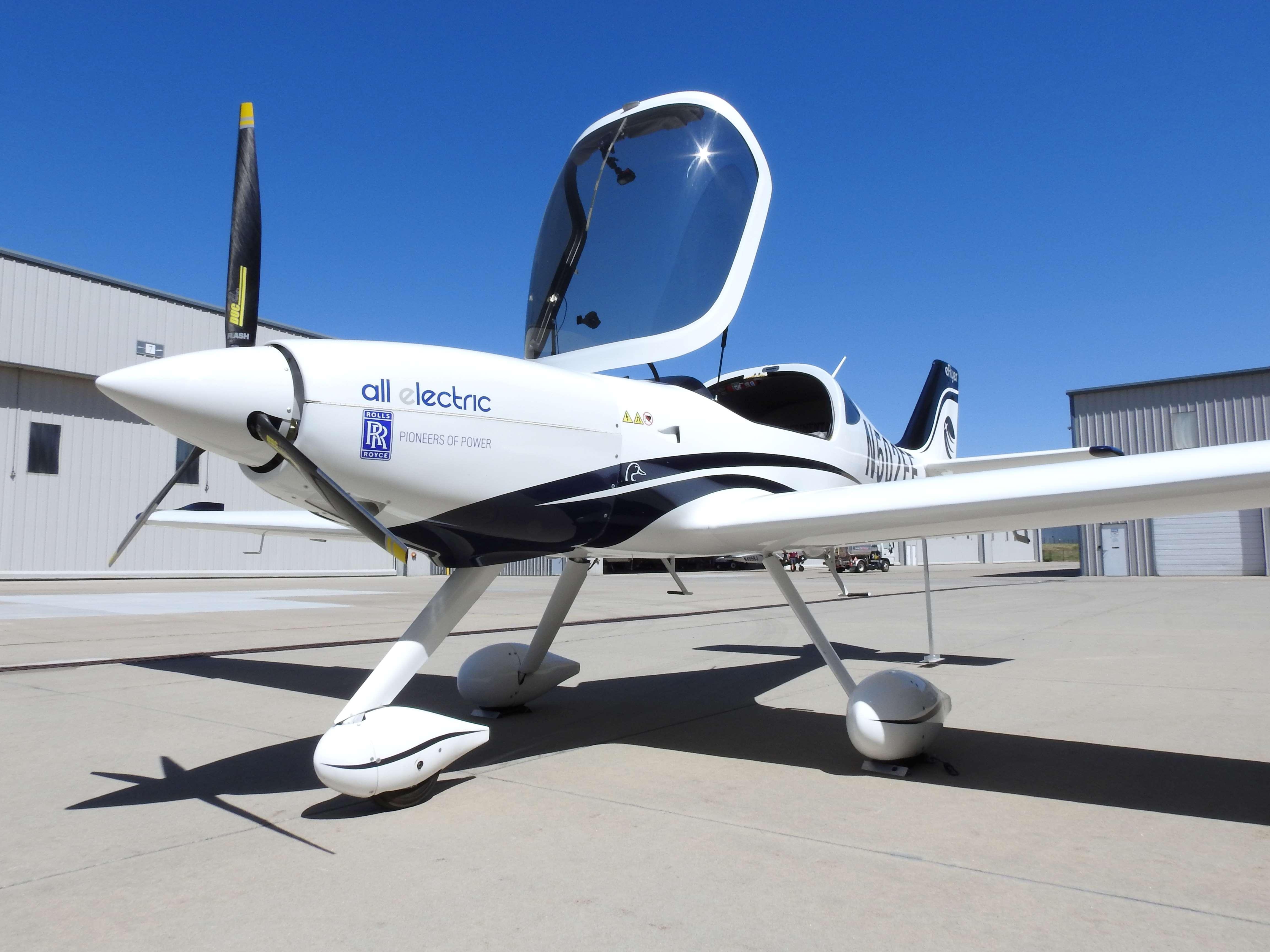
Bye Aerospace is looking to advances in battery technology for future six- and nine-seat all-electric aircraft it plans will follow the two- and four-seat eFlyer 2 and 4 now in development.
The company is working with the UK’s Oxis Energy to test lithium-sulfur battery packs with higher energy density than the lithium-ion system used in the eFlyer 2 and 4. Improved battery performance is key to offering greater range in the planned eFlyer X and Envoy, CEO George Bye said in a video interview recorded for Aviation Week’s upcoming online Business Aviation Week 2020.
The eFlyer 2 is aimed at the flight school market, the two-seater optimized for typical training sorties of up to 1.3 hr. with 20-min. recharging between flights. Designed for aerodynamic efficiency to maximize performance on available batteries, the aircraft has a lift-to-drag ratio of more than 20 compared with around 10 for a Cessna 172.
From the slim nacelle enclosing the 90-kW Rolls-Royce RRP70D electric motor, the 46-in.-wide cabin, efficient 37.8-ft.-span wing and 75 kWh battery pack in the wing, to the battery management system computers and motor controller–“all those are laid out in an advantageous way,” Bye said.
The eFlyer 4 is essentially a stretch of the two-seater, sharing common aerodynamic and structural DNA, and uses the same battery technology with roughly a doubling of the pack size. “There’s a significant gross weight increase, 1,200-1,300 lb., kind of like going from a Cessna 172 to a 182 or 206,” he said.
The planned eFlyer X will fly higher and faster, a “lightly pressurized” single-motor six-seater designed to cruise at 25,000 ft. The aircraft will have retractable gear where the eFlyer 2 and 4 have fixed gear.
Illustrating an advantage of electric propulsion, Bye noted the company’s eFlyer 2 developmental prototype has the same climb rate at 9,000 ft. as at sea level. “There’s no combustion, just electrons to torque. The bottom line is electric loves to fly high and the calibrated airspeed to true airspeed benefits are fully realized–and the ability to get there, the climb rate all the way up, is not diminished.”
The planned twin-motor, nine-seat Envoy will also fly higher and faster. But, as with the eFlyer X, battery energy density is a consideration that could impact a formal program launch.
“There’s great promise for the eFlyer X, that six-seater lightly pressurized retractable, but most of the people who buy an airplane of that type like to have longer range,” Bye said. The same goes for the Envoy than would follow.
“While the business case for the eFlyer X closes today, a higher energy-density battery would bring an even greater benefit to the six-seater at altitude because that customer that likes the high-end, higher-speed, higher-altitude single is generally looking for a bit more range,” he said.
“And, likewise, when we go on to a nine-seater twin configuration, the technology available today or in the very near term would close the business case. It would be shorter range and even higher altitude–about where King Airs and other turboprops fly–but higher energy density and longer range would make that even more useful,” Bye said.
This is where the relationship with Oxis comes in. The batteries Bye is using now are at 260-270 Wh/kg and there are research cells in laboratories at 300-plus, but lithium-sulfur offers 500 Wh/kg. “It’s a great battery cell, but it’s not quite ready yet to be applied to a formal certification program,” he said.
“So our relationship with Oxis, and the ability to apply that to the eFlyer X and Envoy, is dependent upon a bit more R&D,” Bye said. “We will be talking in the next few weeks about creating prototype large battery packs using these advanced cells.”
Challenges with lithium-sulfur include low C rating, or charge/discharge rates, and short cycle life. Oxis has plans in place to address those issues and, compared to lithium-ion as a battery chemistry “lithium-sulfur has a longer road map to higher energy densities,” Bye said. “It’s not a hope, it’s a pathway.”





